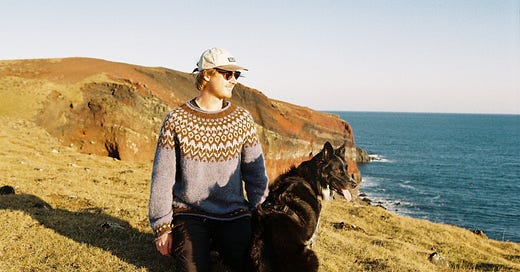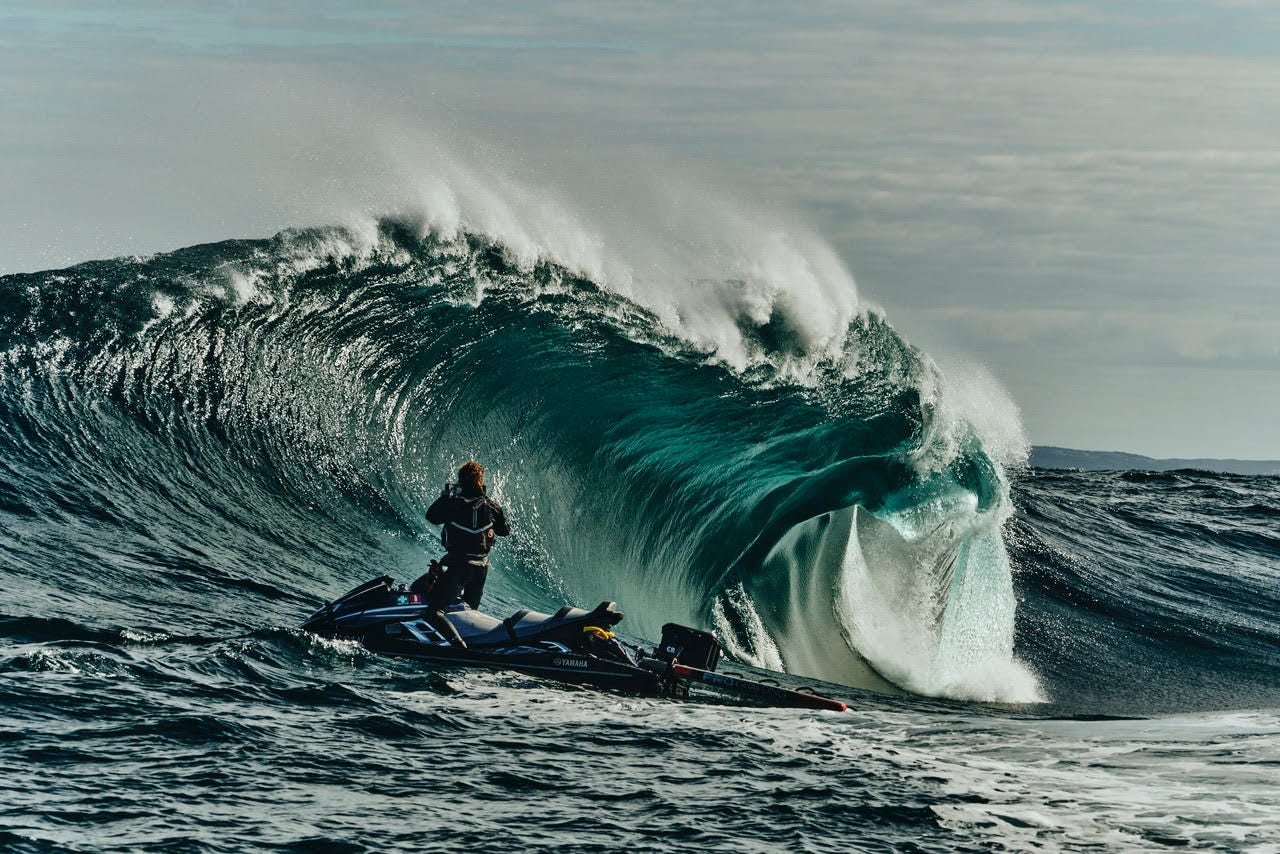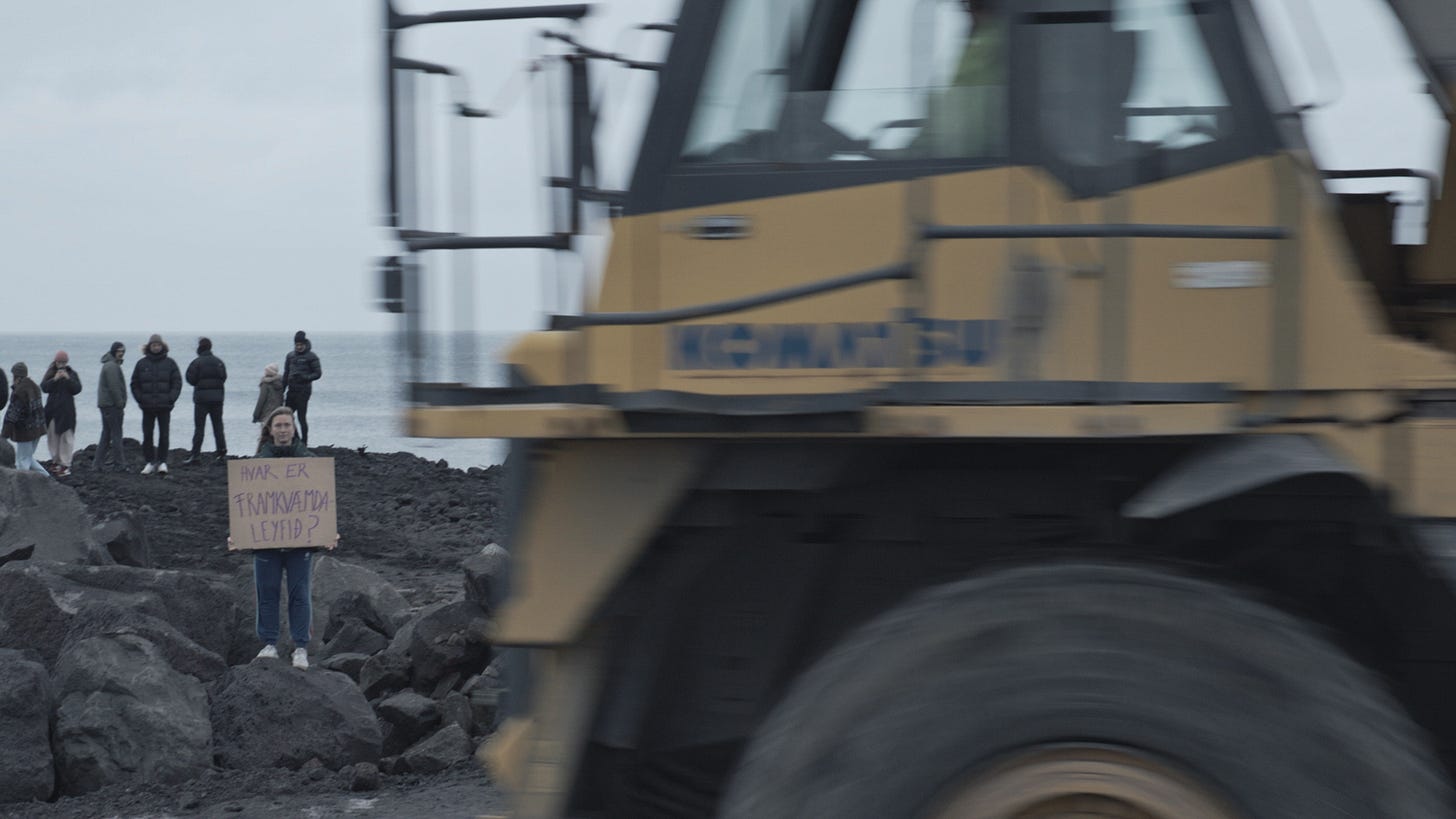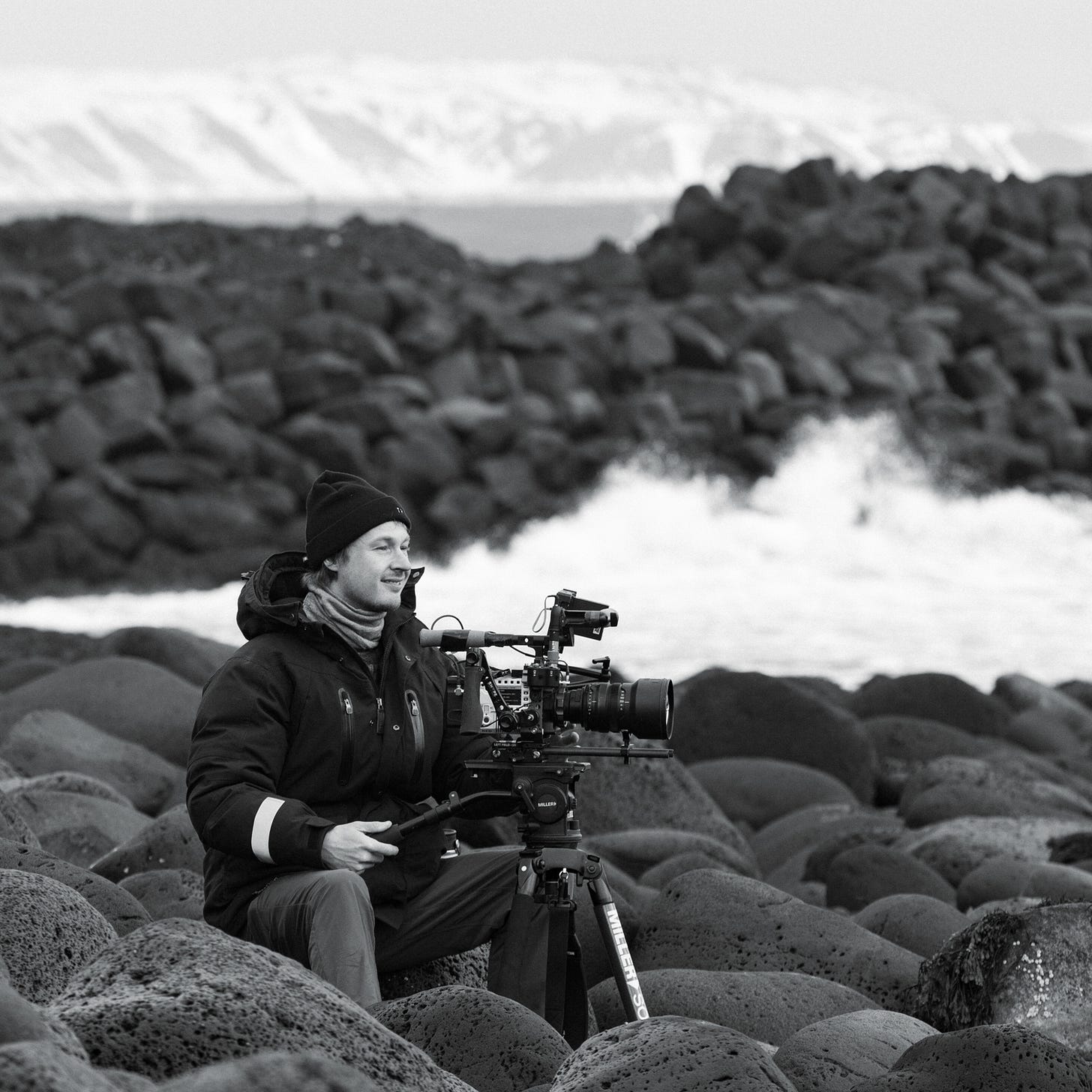“They wanted to destroy the wave.”
An interview with surfer and filmmaker Steve Wall, who lives in Iceland
“These powerful guys felt disrespected, and they wanted to destroy the wave just to get back at the surfers.”
Steve Wall is a lifelong surfer and film director from Australia, with a background in surf photography and surf film. I met him a few weeks ago in Iceland, when I was learning about the crazy harm open-net salmon farming brings to wild salmon populations and coastal ecosystems, as part of a Patagonia Healthy Waters Impact Camp. [I’ll be writing more about that in the future, in the meantime watch this and avoid eating farmed salmon!]
I interviewed Steve while a spirited karaoke session was going on in the room next door. At one point, Men at Work’s ‘Down Under’ came on and I have nothing but respect for the fact that Steve paused our interview to go and sing it, before returning to finish our chat. We spoke about the destruction of Iceland’s best wave, David and Goliath battles, and why he moved to Iceland. Enjoy!
Hey Steve, how did you end up in Iceland?
I came to Iceland in March 2023, to Seyðisfjörður where we are now. I was here for a backcountry snowboard festival and pretty much met the entire Icelandic surf and community on my first night. Someone mentioned I’d get along with Berglind Jóhannsdóttir, an Icelandic photographer who wasn’t there, but we had a bit of a chat online.
I spent a month driving around Iceland in a van through winter looking to ski and surf. We drove to the north, to an amazing point break – it was minus 22 degrees and pumping, and it snowed two metres in a week. It was a raw, classic, rugged Iceland experience but I didn’t meet Berglind.
Then on the way home, I had a stopover in Helsinki for eight hours and she was also in the city. I suggested we meet up and we had this crazy connection. I was going home to Australia to make a nature documentary in the desert and asked if she wanted to come. You don’t expect someone to drop everything and say yes to that, but she did. Then during that trip, she asked when I was going to move to Iceland. I’ve been here a year and a half now.
I live outside of Reykjavik, an hour from the main city. We’re surrounded by wild nature and 20 minutes from a bunch of different waves.
Was it easy to integrate into the surf community?
Before I even moved here, I knew half of the community, it’s that small. Though it took a year to get to know the whole community well, especially as I'm some guy from a weird island in the middle of nowhere that doesn't speak their language.
When did you hear about the threat to Thorli [Iceland’s most revered wave]?
Within about a week of living here. It's hard as someone who comes from Australia, which has such a developed surf culture, with lots of clear examples of what surfing can do for a community and a society.
Here surfing exists on the fringes of society, it’s a niche thing. And for most Icelanders, the ocean is not a playground or place of joy, it's a fishing ground, and a place where their fathers and uncles went out to make a living and never came back. Every family has a dead sailor, even in their recent memories. So surfing can be seen as something reckless and maybe even disrespectful to the spirit of the people who have gone to sea in a serious way.
Tourists see Iceland as a place of pristine nature, but when you come and live here there are sometimes things that contradict that image.
Þorlákshöfn, or Thorli as it’s known, was the most consistent and accessible wave in Iceland. You can drive 10 hours for a surf in some far off corner of the country but that’s not sustainable. At Thorli, you could have fun when it’s one or ten foot, and it’s where everyone got their wave count up. It was the platform and training ground that surf culture was built on in this country.
What exactly happened?
The area has always been a heavy industrial part of Iceland, it’s not somewhere tourists go, and there wasn’t much there in terms of employment prospects until around eight years or 10 ago when the government encouraged development there. Some good things came out of that, but some local business owners, who have a lot of power in the area, have been pushing for more international companies, shipping, and mining companies, to work here.
In the early 2000s, the first Icelandic surfers started putting time in at the wave, but they kept it largely secret. Even to the extent that 15 years ago, when the local council realised people were surfing there and offered them a shed to get changed or shelter in and a webcam, the surfers said no to keep the spot on the downlow. As most people would if you had this world-class point break to yourself and your friends! But it perhaps gave the authorities the idea that the surfers didn’t care about the place.
The wave breaks directly into the western wall of the town’s harbour. In 2020 they decided they wanted a bigger harbour, so they pushed out the harbour wall, which really hurt the wave. It made it say 30% worse but it was still an amazing wave.
Then there was talk about expanding the harbour even further. It went through various stages of planning, but the town essentially promised one thing, and then acted in another way. This really betrayed the trust of the surfers, who understandably became confrontational, and the discussions got personal and nasty.
These powerful guys in the town felt disrespected, and they wanted to destroy the wave in a vindictive, personal sense, just to just get back on the surfers.
Local people didn’t really understand what was happening, or how a break wall would have a negative effect on the quality of the surf, and because surfers would drive to the spot and then leave, perhaps some people thought they were just tourists or people not contributing to the economy. The wave never appeared in any tourist literature. There was no sense of what surf culture can bring to a place.
On the other side of the wave, they were dredging the channel so bigger ships could turn around there, and they just threw those rocks over the wall right on top of the wave. They could have put the rocks in any other direction, but they dumped them there.
What are the parallels with the behaviour of big salmon firms, who want to build more open-net salmon farms around Iceland, even though they’re hugely harmful to wild salmon populations?
These are David and Goliath battles, where companies will push for quick approval with a project, and then just challenge the technicalities in court with their infinite resources.
The surfers did go out into the community and talk to people, they did beach cleans, surf lessons and talks but because the surfers were in opposition to the most powerful industrial interests of the town, people were scared to show up for them or even to associate with them.
We rushed out a short film about it last April to try and delay the development, which worked to a point, but not in the end. It's a significantly uphill battle for community groups or individuals to push back against commercial interests in Iceland.
Even if not that many people care about surfing in Iceland, there are many who care about nature, and this is the battle of public land being taken by a private company without community approval. It's the wave this time, but it will be the fishing river or the ski mountain next, if we don't draw a line in the sand.
We booked out the biggest cinema in Reykjavik and brought the whole outdoor community of Iceland together to watch it, which helped fund the legal costs.
We wanted to show people in Iceland that there is a beautiful surf community here and that’s something that can bring value to their society, and I think we succeeded in doing that but behind the scenes the wheels had already been turning and it was impossible to win in the end. They started up their bulldozers in February of this year.
How is the wave now?
There's still a wave there, but you can't surf it above mid tide, because getting out of the water is impossible, well downright dangerous, as the break would push you directly into a vertical, five-metre high wall. If you get pinned in there, you're trapped.
It's a really tough one, because if there was ever to be a surf culture in Iceland, it was going to be in this town. And in a country where it can be challenging to enjoy healthy outdoor activities, especially for kids and young people, that's a real shame and a missed opportunity.
Follow Steve here & watch Aldan Okkar Allra, the film he and Berglind made about the Icelandic surf community in the hope of saving Thorli from development, here.
Other news:
On the subject of surf tourism, here’s a piece I did for Conde Nast Traveler in the US earlier this year on how Morocco is navigating its surf tourism boom.
And some UK surf film screenings I’m very excited about…
Ceibo, a film by Maddie Meddings, starring the awesome Lucy Small, who I interviewed here, and Pacha Light, which looks at how women in Ecuador are responding to the climate crisis. Tour dates here.
And The Big Sea, the game-changing film by Lewis Arnold, who I interviewed here, Chris Nelson and Demi Taylor, which lifts the lid on the toxic production of neoprene wetsuits. Tour dates here and see you at the Brighton leg on Monday!
Speaking of Surfers Against Sewage, can’t wait for the annual Paddle-Out Protests next month. The Brighton event starts at 1030 at the West Pier, see you there!
Please fwd this newsletter to anyone who you think might be interested & if you have any story tips on any of these themes pls get in touch.







